Can emotional AI transform our lives? Let's try to find this answer through this ultimate guide to affective computing.
Imagine these two scenarios:
Scenario 1:
You're playing a spooky haunted video game, which is really scary. What if there are sensors present in the video game that can ascertain your heartbeat reaching peak levels to tone down the level of spookiness subsequently?
Scenario 2:
You've ended up writing a scathing email. Just when you're about to hit the "send" button, your computer warns you to pause and plays a piece of soothing music from your "Relax" playlist on Spotify.
These two scenarios showcase how affective computing works.
In the forthcoming sections, I will discuss the definition of affective computing, its working mechanism, certain affective computing applications with practical user cases, and companies that work on affective computing.
So, without further ado, let's get started
Table of Contents
1. What Is Affective Computing?

The affective computer, also known as emotional AI, allows computers and systems to ascertain, process, and simulate human emotions. You can even call it emotional computing. It is an interdisciplinary field that takes advantage of psychology, computer science, and cognitive science.
While it may seem unusual that computers can achieve something that is so characteristically human, research shows that they have achieved acceptable levels of emotional recognition from visual, textual, and auditory sources. By leveraging the insights derived from emotional AI, businesses can offer better services for their target audience and make better decisions in customer-facing processes like customer service, sales, or marketing.
2. Can A Software Really Decode Emotions?

Although this is a big question that is yet to be answered, recent research shows that AI can ascertain emotions with facial expressions and speech recognitions. Just like people express their feelings in surprisingly similar ways across different cultures, computers can detect these clues to classify emotions precisely. It is also known as a sentiment analyser. In fact, it was in 2003 and 2006 when they even outperformed humans during research by achieving an accuracy level of 70% to 80%, while human accuracy is ~60%.
How Has Affective Computing Become Relevant Today?
The rise of affective computing can be attributed to high-resolution cameras, high-speed internet, and machine learning capabilities, especially deep learning.
Affective computing largely depends on:
- High-resolution dual cameras to capture videos
- Fast broadband connections to communicate through these videos
- Machine learning models to ascertain emotions in these videos
All these things have improved dramatically since the 2010s. Almost all smartphones have high-resolution cameras and an increasing number of real-time video users utilizing high upload speeds. All of this is possible, thanks to symmetric fiber-to-the-home (FFTH) installations. Finally, deep learning solutions needing a significant amount of data and computing power have become easier to deploy.
3. How Does Affective Computing Work?
Most affective computing systems employ labeled training data to train machine learning models to ascertain emotions in videos or speech. We all know that deep learning systems' performance enhances with more data; companies in emotional computing are vying to improve the scope of their labeled data set to enhance their models.
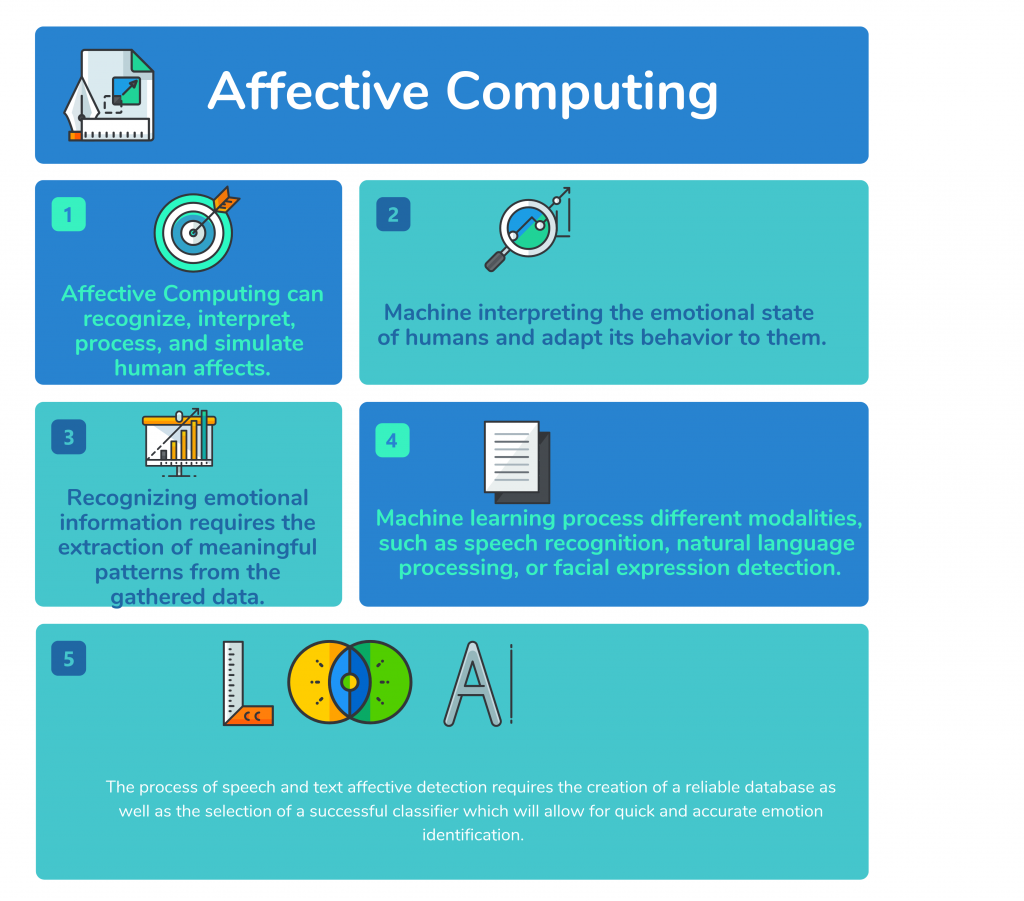
To regulate human expressions, affective computing solutions operating on images utilize these techniques:
- The face is extracted from the background
- With its help, facial geometry, i.e., locations of eyes, nose, and mouth, can be estimated
- Based on facial geometry, facial expressions can be normalized in terms of the impact of head rotations or other head movements
Let's now divert our attention to some affective computing applications in the next section.
4. 5 Affective Computing Applications Use Cases
Here are some of the affective computing applications' real-life use cases.
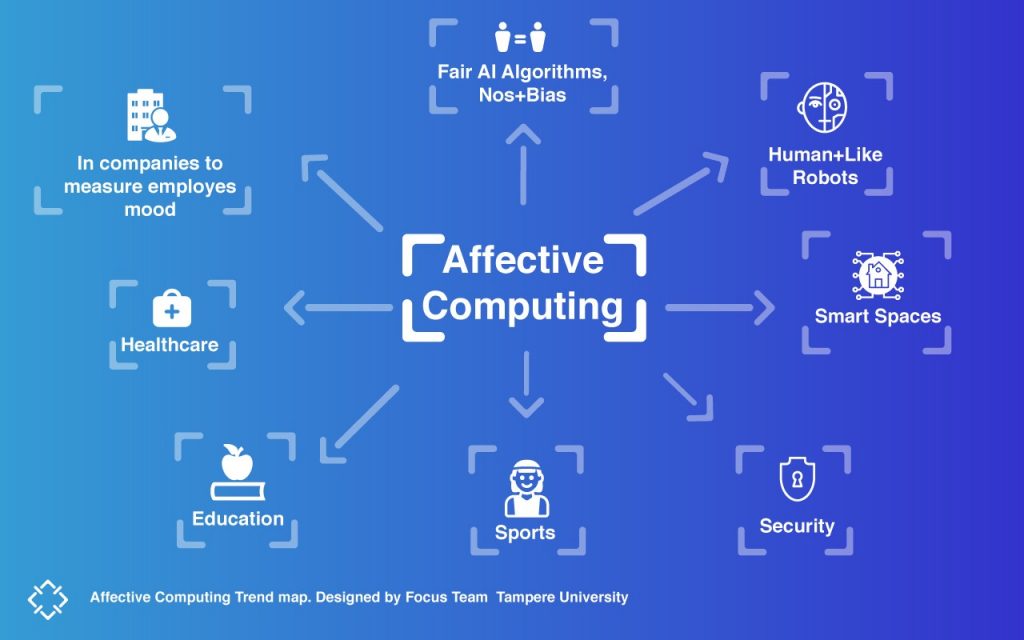
Marketing
During their career, every marketer hears advice from some marketing guru to make their marketing efforts appeal to the target audience's emotions. Till now, it was a vague, hard-to-measure concept. But, now marketers have started to put in their efforts when it comes to perceived emotions. Here are some use-cases of affective computing in marketing.
Marketing Communications
Businesses can decode what makes their customer engaged and organize their communication strategies according to the information derived. A prime example is that they can now measure customer reactions to their products & services and campaigns to optimize their marketing strategies.
Market Research
Emotional AI can help measure consumer reactions to newly launched products and help companies comprehend what other products do well and what they need to do to satisfy customers when they enter a new market.
Content Optimization
Affective computing can even come in handy for businesses to generate content that resonates well with their customers.
Human Resources
When it comes to HR, affective computing can come in handy in the following ways.
Recruitment
Businesses can easily observe the amount of stress candidates have and how they communicate emotions during the interviews. This will help them make better recruitment decisions. A prime example of this is Unilever. The company currently employs emotional AI during job interviews. However, for this to be effective, they need to take the interviewee's approval to record the interviews. Also, HR teams should not completely be dependent on the preciseness of affective computing. The reason being, people have the knack of expressing themselves in different ways.
Employee Training
Affective computing can even be utilized for training employees who will directly interact with customers. Over here, employees work with intelligent customer interaction simulations that evolve based on employees' responses and emotions, enhancing their empathy and customer service.
Tracking Employee Satisfaction
HR teams can track employees' stress and anxiety levels during the job and observe if they are satisfied with their current job and workload. However, it also raises the question of the ethical issue of monitoring all employees during work hours. They might need to get consent to monitor their emotions continually.
Autonomous Driving/Driver Assistance
Affective computing can even be useful for autonomous driving.
Safety
Automotive companies can take advantage of computer vision to track the driver's emotional state while he/she is driving. In case the driver is too tired/stressed/angry/sad, it sends out alerts for unsafe driving.
Driving Performance
Affective computing can aid in measuring the driving performance of autonomous cars. With the aid of cameras and microphones embedded in the four-wheeler, emotional computing can monitor the passengers' emotional state and observe if they seem to be stressed or satisfied with the driving experience.
Tech
Here's a look at how affective computing plays a crucial role in tech.
Integration with IoT
Emotional AI can be integrated into IoT and other smart devices to act based on the users' emotional states detected through voice and face analysis. A prime example of that is that a smart air conditioner might turn on automatically if the customer seems to be too sweaty.
Healthcare
Affective computing can also play a role in healthcare. Let's find how.
Patient Care
A bot can be employed not only for reminding patients to take medications but also to monitor their physical and emotional well-being every day to observe in case there are any problematic issues. A prime example of that is Medic Bot that reminds patients to take medications and also tracks pills.
Medical Diagnosis
Affective computing can be employed to take advantage of doctors' voice analysis to diagnose diseases like depression and dementia. For example, a voice analysis app called MyCoachConnect helps in effectively monitoring patients with mental illness.
Counseling
Emotional AI can be utilized in counseling sessions to determine mental states of the counselee better and help doctors support counselee more effectively.
Now that you have looked at the affective computing applications, I will discuss different companies working on affective computing in the final section of the write-up.
Let's get started.
5. 5 Companies Working On Affective Computing
Here's a look at some of the companies working on affective computing.
1. Humanyze

Year Founded
2011
Headquarters
Boston, MA
Company Overview
Humanyze believes that a company's greatest assets are its employees and the way they collaborate. The company is redefining the future of work with the help of science-backed analytics and data-driven insights. All of these aid companies to make continuous work improvements beneficial for both employees and their business.
Contribution to Affective Computing
With the help of Humanyze's social sensing and analytics platform, developed at MIT, companies can quantify social interactions that were previously unmeasurable. Thanks to this information, you can enhance teamwork and employee engagement, improve processes, and plan for growth. Humanyze has developed a sensor-laden badge that transfers data on activity, speech, and stress patterns. Microphones and proximity sensors help employers comprehend what their high-performing teams are doing differently from their less effective ones.
2. Drive.ai
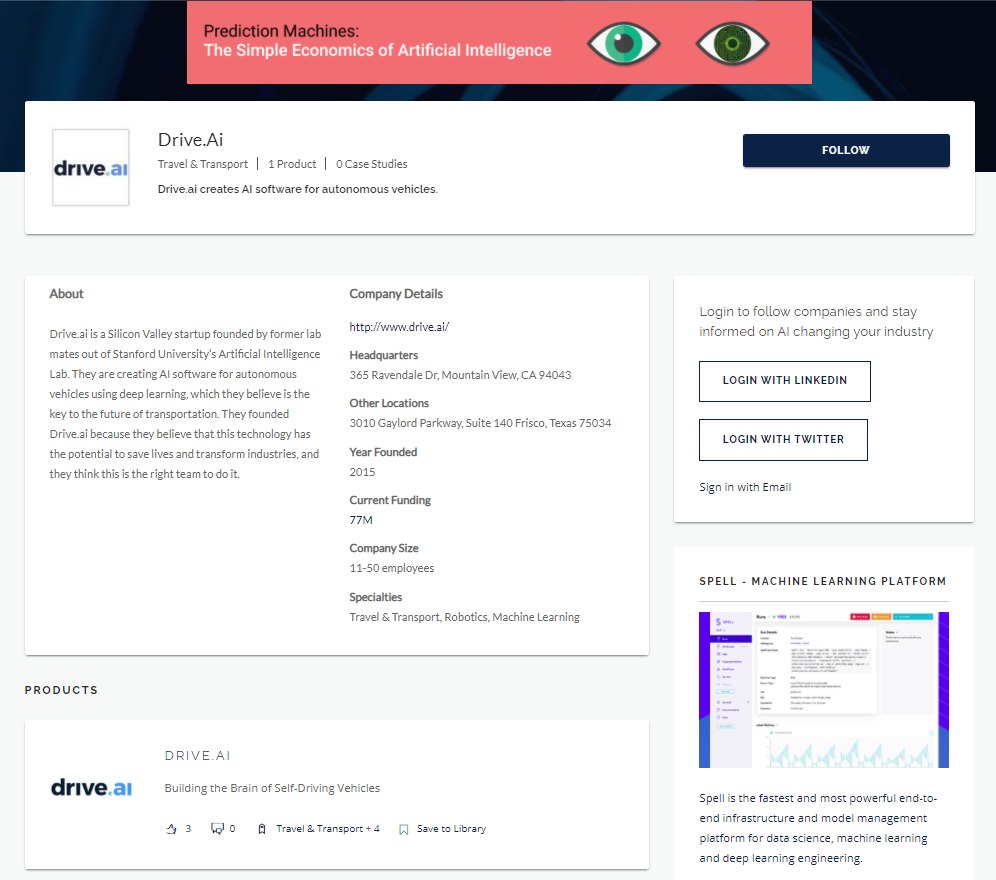
(Image Source)
Year Founded
2015
Headquarters
Mountain View, CA
Company Overview
Drive.ai is a Silicon Valley start-up firm founded by former lab mates passed out from Standard University's Artificial Intelligence Lab. The company has developed AI software for autonomous vehicles employing deep learning, which it believes is the key to the future of transportation. The company was started as they thought that this technology could save lives and transform industries.
Contribution to Affective Computing
The company has created software with the aid of deep learning for autonomous vehicles. Its objective is to enable autonomous vehicles to replicate the driving aspect of human driving experience and the communicative part. The system integrates a roof-mounted external communicative device utilizing written cues and more language-independent signs like emoji to communicate the vehicle's intent to those around it.
3. Kairos
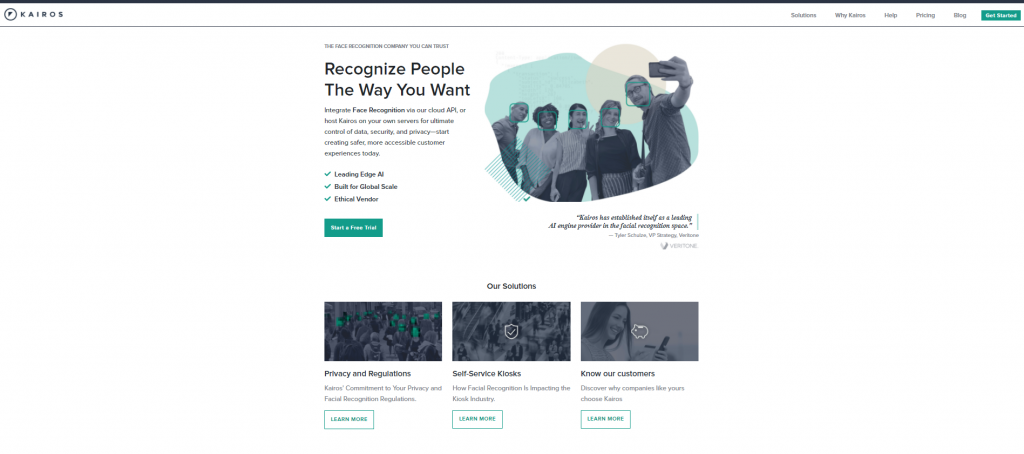
Year Founded
2012
Headquarters
Miami
Company Overview
Kairos is a leading face recognition AI company utilizing an ethical approach to identity towards global communities. Thanks to its computer vision and deep learning, the company identifies faces in photos, videos, and the real-world.
Contribution to Affective Computing
Kairos is a human analytics platform for developers to capture data measuring people's feelings and interactions. The APIs and SDKs present in the company make it effortless to integrate face analysis into any mobile or web application that aids in comprehending the way people feel as they interact with products, content, and the real-world. Some of the applications in which it is used include healthcare, advertising, time & attendance, online education, and cars & automotive.
4. Nuralogix
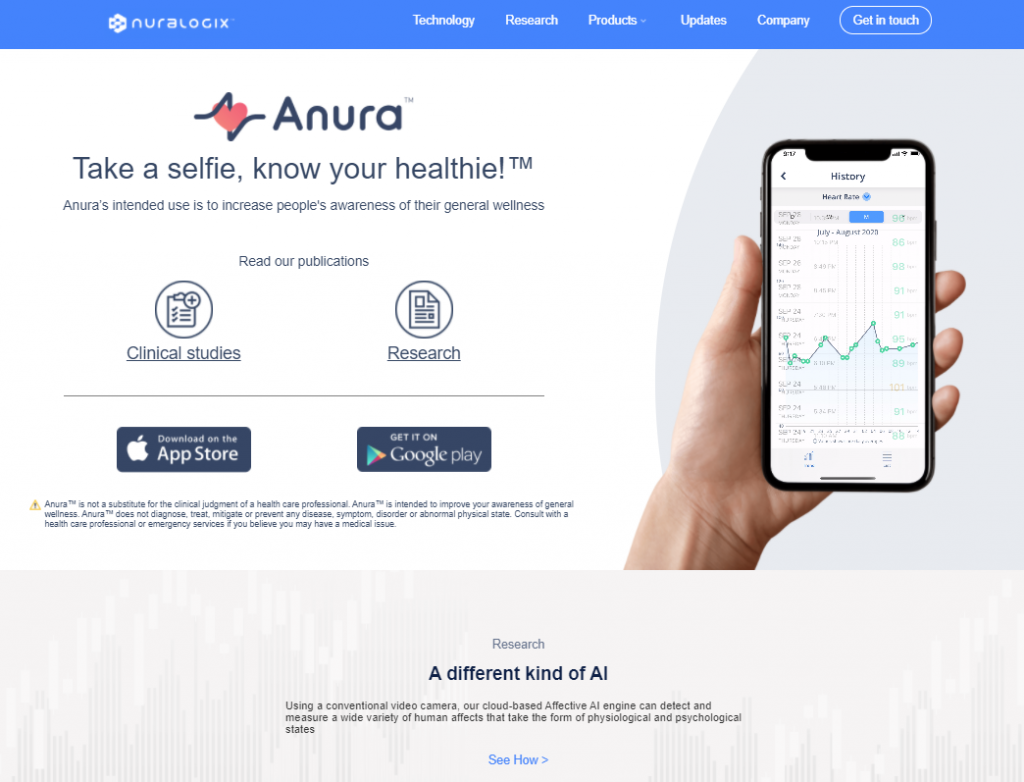
Year Founded
2015
Headquarters
Toronto, Canada
Company Overview
Nuralogix employs affective intelligence to enhance the lives of people across the globe.
Contribution to Affective Computing
Nuralogix has developed patent-pending technology to decode hidden emotions. The technology is known as Transdermal Optical Imaging (TOI™), employing a conventional video camera to extract facial blood flow information from the human face. It applies advanced machine learning algorithms and neuroscience to model and detect hidden/invisible human emotions irrespective of the presence or absence of facial expressions.
5. Affectiva
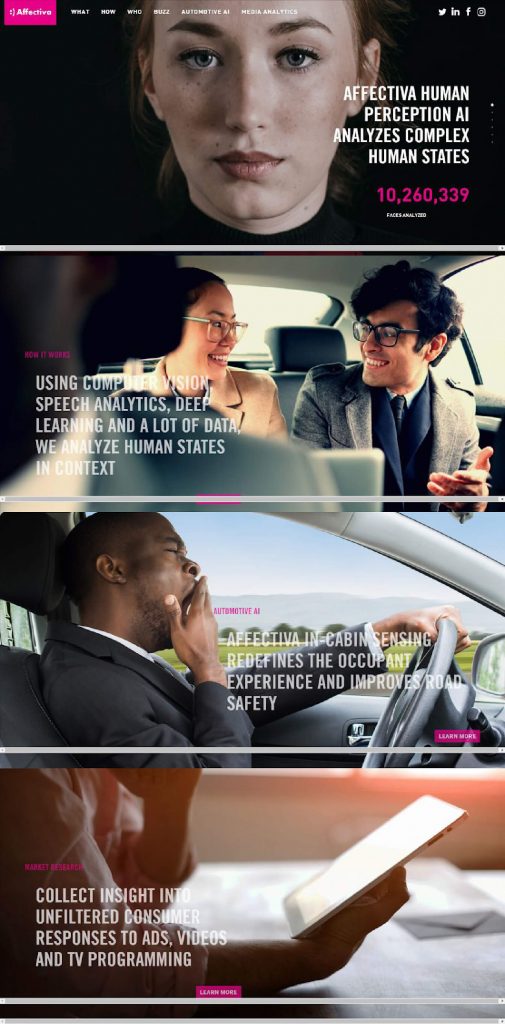
Year Founded
2009
Headquarters
Boston
Company Overview
Affectiva is a pioneer in developing emotion recognition software. The company has built its own science platform employing deep learning and the world's largest emotion database.
Contribution to Affective Computing
Affectiva’s solutions assists in providing insights into the consumers’ emotional engagement when it comes to digital content, movie trailers, brands, TV programs, and advertising. It also allows developers to add emotion-sensing and analytics technology to their apps and enhance digital experiences. The emotional database present in the company adds up to at least 3.9 million faces analyzed from more than 75 countries amounting to over 40 billion emotion data points. This data comes in handy during the training and testing of its classifiers.
6. Conclusion
The idea of affective computing is not about emotional intelligence between humans and machines. Instead, it is all about machines helping humans. Affective intelligence has the power to provide a healthy living to people, one that benefits both humans and machines.
As time has gone by, entrepreneurs have started to realize the importance of affective computing in businesses. The good thing about emotional AI is, it can reshape the workplaces, especially in cases connected to the privacy and security of the technology being evaluated. The ultimate objective of affective computing therefore remains to enrich human interaction with machines.

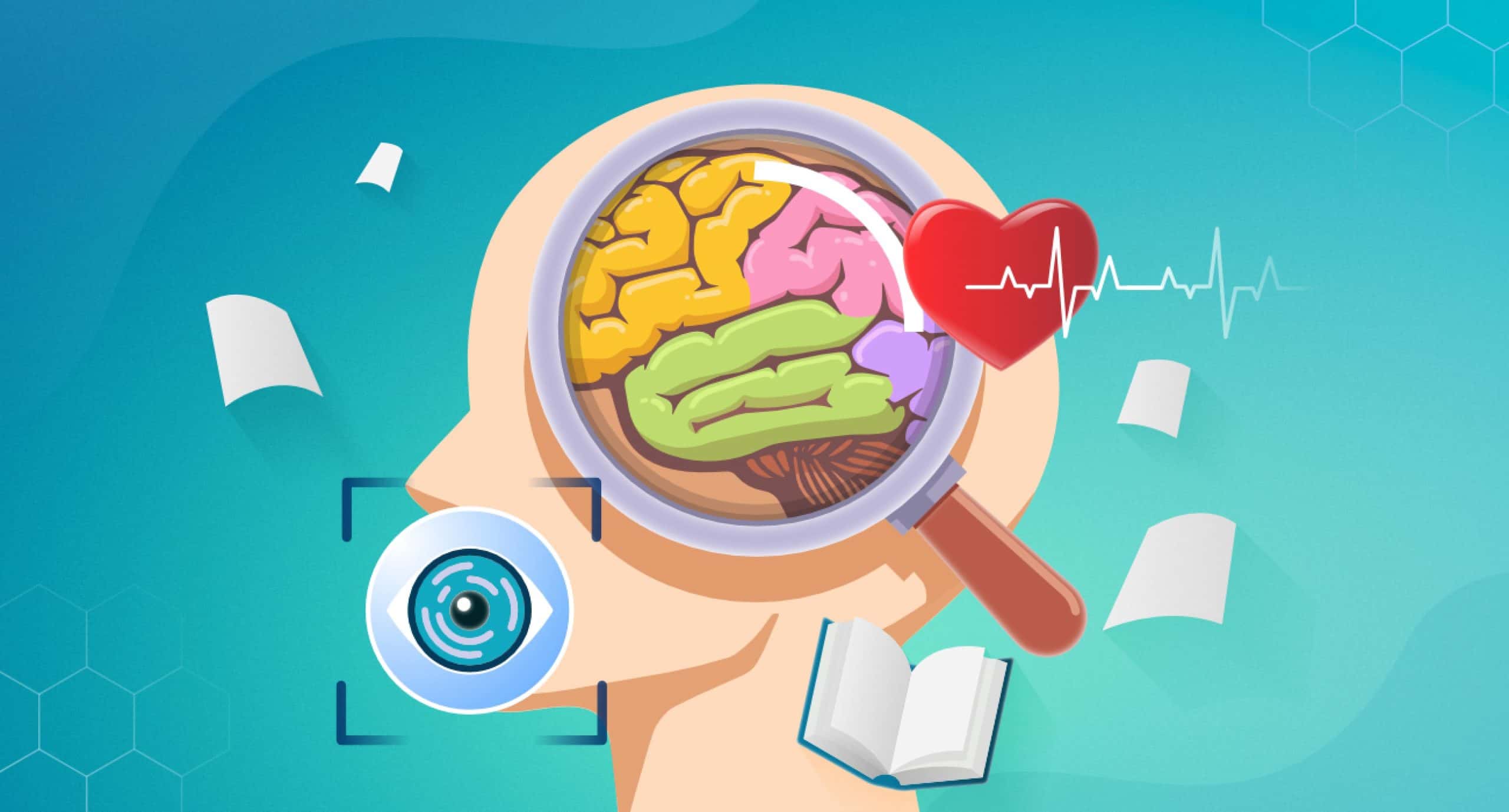













Leave a Reply